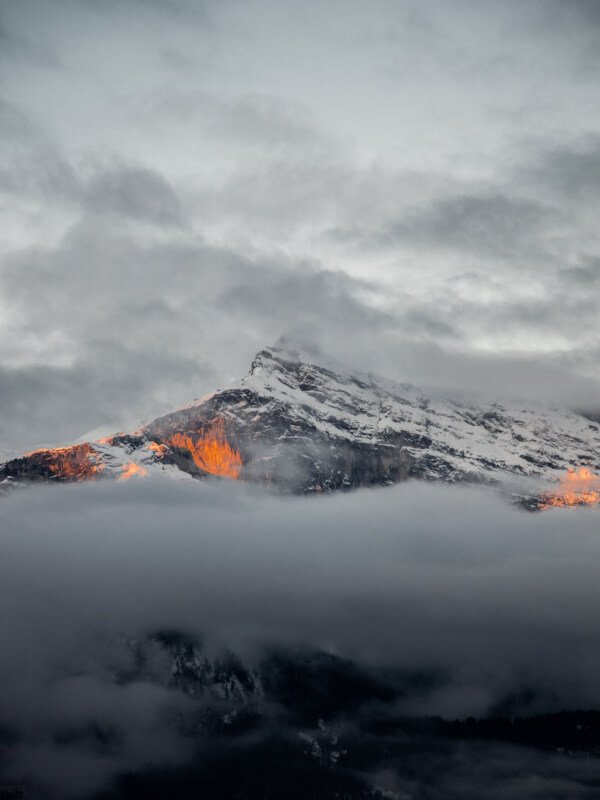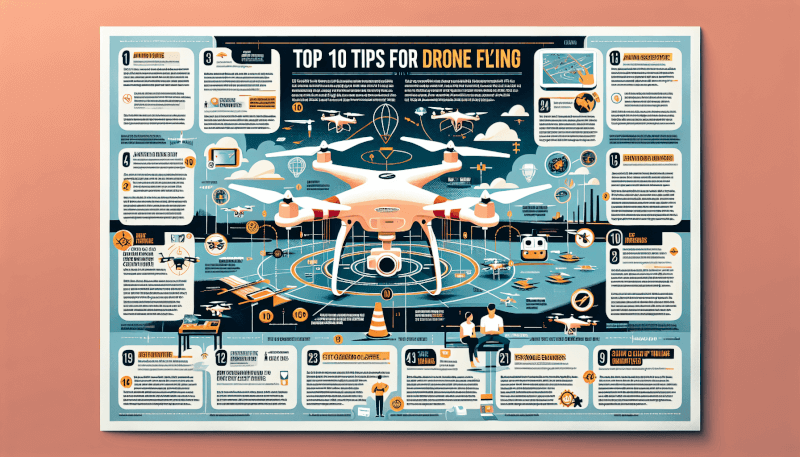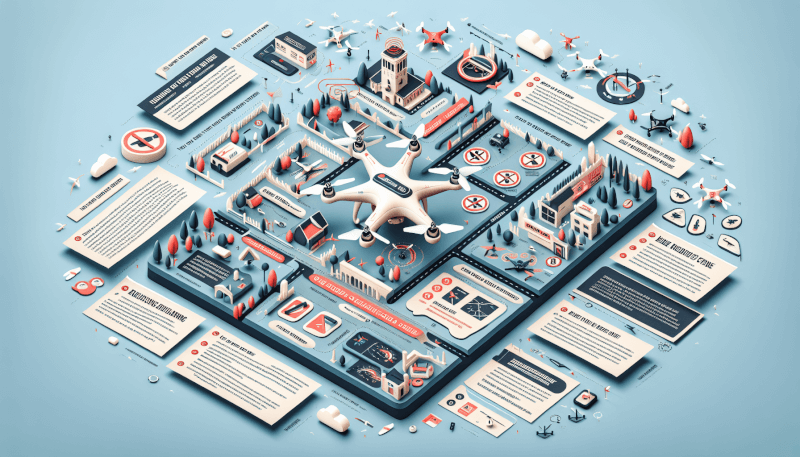So you’ve got yourself a drone and you’re ready to take flight, but before you soar to new heights, it’s important to ensure you’re flying safely and responsibly. In this article, we’ve compiled the top 10 tips that will help you navigate the skies with confidence and keep both yourself and others out of harm’s way. From understanding regulations to mastering your drone’s controls, we’ve got you covered. So, buckle up and get ready to take to the skies safely with these essential tips.

1. Familiarize Yourself with Drone Laws and Regulations
When it comes to flying a drone, it’s essential to start by familiarizing yourself with the laws and regulations governing drone operation. Research and understand both local and national laws pertaining to drones in your area. These laws may vary depending on where you are, so it’s crucial to know what rules apply to you. In some cases, you may need to obtain permits or licenses before flying your drone. Ensure that you follow all guidelines and regulations set by the FAA (Federal Aviation Administration) to ensure a safe and legal flight.
2. Choose an Appropriate Flying Location
Selecting the right flying location is vital for a safe and enjoyable drone flight. Look for open and clear areas that provide ample space for your drone to fly without any obstructions. It’s important to avoid crowded spaces and areas with obstacles such as trees, buildings, or power lines. Additionally, always check for any airspace restrictions that might be in place in the chosen location. Some areas may have specific airspace restrictions due to airports or other sensitive areas, so be sure to fly within permitted zones.
3. Perform Pre-flight Checks
Before taking off, it’s crucial to perform pre-flight checks to ensure that your drone is in optimal condition for flight. Inspect the drone thoroughly for any damages or faults, such as loose parts or cracks. Check the battery level and ensure it is fully charged to avoid unexpected power failures mid-flight. Verify that the propellers are securely attached and not damaged, as this can greatly impact the stability and control of the drone. Additionally, consider calibrating the drone’s compass and GPS if necessary for accurate flight. Lastly, update the firmware and software to the latest versions to benefit from any enhancements or bug fixes that may have been released.
4. Learn How to Control the Drone
To fly a drone safely, it’s essential to have a good understanding of how to control it. Start by practicing flying in a safe and controlled environment, away from any potential hazards or obstructions. Familiarize yourself with the basic controls of the drone, including throttle, yaw, pitch, and roll. Understanding these controls will allow you to maneuver the drone effectively. Learn how to perform basic maneuvers such as takeoff, landing, and hovering. As you gain experience and confidence, gradually increase the complexity of maneuvers, but always prioritize safety throughout your flights.

5. Maintain Visual Line of Sight
During the entire duration of the flight, it’s crucial to maintain visual line of sight with your drone. Always keep the drone within your sight and avoid flying it behind obstacles or beyond your line of sight. If necessary, consider having a spotter with you to help maintain visual contact with the drone and assist in identifying any potential obstacles. Maintaining visual line of sight is essential in ensuring that you have full control over the drone and can react promptly to any unexpected situations that may arise.
6. Be Aware of Weather Conditions
Before taking your drone out for a flight, it’s important to check the weather forecasts for your area. Avoid flying in strong winds, rain, or fog, as these weather conditions can pose significant risks to the stability and control of your drone. Be cautious of gusts and sudden weather changes during the flight, as these can affect the drone’s ability to maintain stability. It’s always better to err on the side of caution and choose another time to fly if the weather conditions are not favorable.

7. Respect Privacy and Avoid Invasion
Respecting privacy is of utmost importance when flying a drone. Always ensure that you do not fly the drone over private property without permission from the property owner. Flying a drone in a way that invades someone’s privacy, such as recording or capturing individuals without their consent, is not only unethical but may also be illegal. Be aware of and adhere to local laws regarding privacy protection to ensure that you are acting responsibly and respecting the rights and privacy of others.
8. Watch Out for Wildlife and Birds
When flying a drone, it’s important to be mindful of wildlife and birds that may be present in the area. Avoid flying too close to them to prevent disturbances and potential harm. Take particular care around their habitats and nesting areas, as disturbing these areas can have a significant impact on their well-being. Maintaining a safe distance from wildlife and birds will not only protect them but also ensure the safety of your drone, as unexpected interactions can lead to accidents or damage to the drone.

9. Have a Safety Plan in Case of Emergencies
While flying a drone, it’s important to be prepared for any emergencies that may arise. In the event of power or signal loss, it’s crucial to know how to safely land the drone. Practice emergency landing maneuvers to ensure that you can safely bring the drone down in such situations. Additionally, be aware of the possibility of unexpected technical failures or malfunctions and have contingency plans in place. Being prepared for emergencies will help you maintain control over the situation and mitigate any potential risks.
10. Respect No-fly Zones and Restricted Areas
Lastly, it’s essential to be aware of and respect any no-fly zones or restricted airspace in your area. Familiarize yourself with the boundaries and regulations of these areas to avoid any legal repercussions and to ensure the safety of people and property. Additionally, always check for temporary flight restrictions that may be in place due to events or emergencies. These restrictions are in place for a reason, and it’s important to abide by them to ensure both safety and legal compliance while flying your drone.
By following these top 10 tips, you can ensure a safe and enjoyable drone flying experience. Remember to always prioritize safety, be mindful of your surroundings, and respect the privacy and rights of others. Happy flying!



